D-Day 80th anniversary: Crucial roles played by Aussies in Normandy landings
George Dixon went ashore with the original Anzacs at Gallipoli, aged just 15 – and was shot. Three decades later he was fighting again, at history’s other most famous wartime landing.
National
Don't miss out on the headlines from National. Followed categories will be added to My News.
“I wish the Australians were with us”.
Eighty years ago this week, as the Allies launched the greatest seaborne invasion in history, a key British general voiced what many were thinking.
Knowing that the D-Day landings – the first step in liberating Western Europe from the Nazis – would be a tough fight that could potentially end in disaster, amid heightened nerves at HQ on the night of June 5, 1944, Major-General Francis “Freddie” de Guingand, is said to have wished the renowned Aussie 9th Division, legends of Tobruk and El Alamein, was on hand.
Sadly for Freddie, right-hand man to the Allied ground forces’ overall commander Field Marshall Bernard Montgomery, Australia’s infantry were by then fighting closer to home; and the bulk of the extraordinary beach and airborne assaults on June 6, 1944, were carried out by British, US and Canadian divisions.
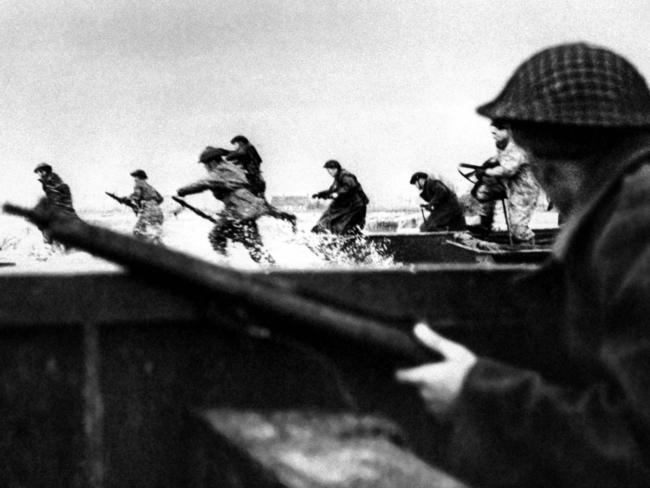
Nevertheless Australians were very much present, with 3,300 serving on that “day of days” and thousands more across the crucial weeks either side: in the air, by sea and even, in small numbers, on land. And that fact is not well-enough known, says the Australian War Memorial’s senior historian Dr Lachlan Grant – something he is determined to change.
“Traditionally there has been a sense that it wasn’t much of an Australian story,” he says of Operation Overlord, the battle for Normandy in Northern France. “But there is a large Australian story there – we just needed to find out who the people were.”
Which, along with fellow historians, he has done – a challenging job because many of those involved were serving on attachment to British forces, as opposed to in all-Aussie units.
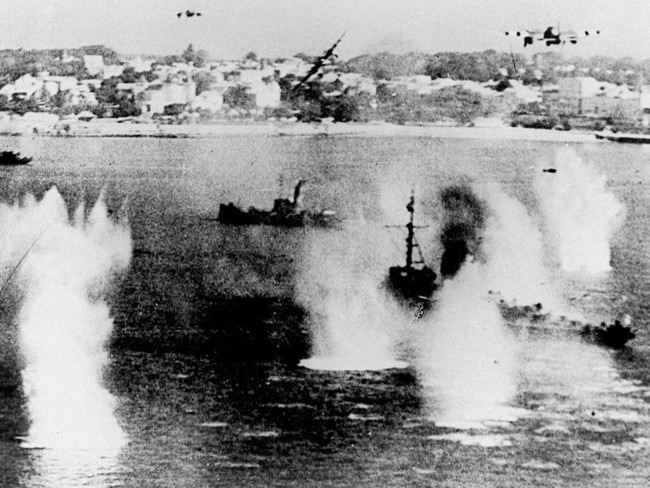
And their experiences are extraordinary: from a WWI Gallipoli infantry veteran who by June 1944 was a naval commander, to a widow who served as at the Dunkirk evacuation, in the Blitz, in Overlord, and at the liberation of the Bergen-Belsen concentration camp.
The largest body of Aussies involved were airmen: bomber crews pounding enemy defences and running decoy missions for weeks before the invasion, and on the day itself; fighter pilots and ground-attack crews ensuring crucial air superiority and hammering German infantry and armour trying to reach the front; and transport crews ferrying the paratroopers and glider assault teams who landed on the night of June 5, plus supplies.
By July 1944 there were around 14,000 Aussie air force personnel based in Britain. On June 6 alone, around 1000 flew missions with Royal Australian Air Force squadrons and 1800 with the British Royal Air Force.
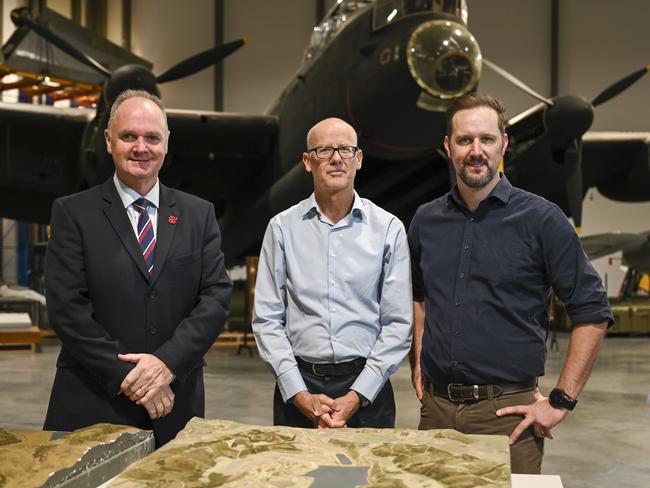
But securing the skies was costly – and Allied airmen paid a high price, with around 16,000 killed over the period.
“We often note that about 12 Australian airmen did on D-Day and two sailors died on D-Day,” says Dr Grant. “But that was just the first day of the campaign. And there was a large build-up to date in the weeks and months beforehand, very much involving the air force. “These months in 1944 that encompass D-Day were the worst in terms of the highest casualties for the Royal Australian Air Force for all of the Second World War. Well over 1000 Australian airmen were killed in the skies above Europe during this period, both before and after.”

Total casualties for the RAAF between April and August 1944 totalled 1,978, with 422 of them in June – “the peak in RAAF casualties for the entire war”, according to Dr Grant.
As the Allies pushed further into France, air squadrons moved their bases across the Channel, leading to increased operational ability – and reuniting Australian service personnel with the French people that had so taken the Diggers to heart in the First World War.
But beyond the photos of ground crew grinning with Norman gendarmes, or pilots toasting in cafes, the air war remained both vital and hideous, even with Germany on the back foot.
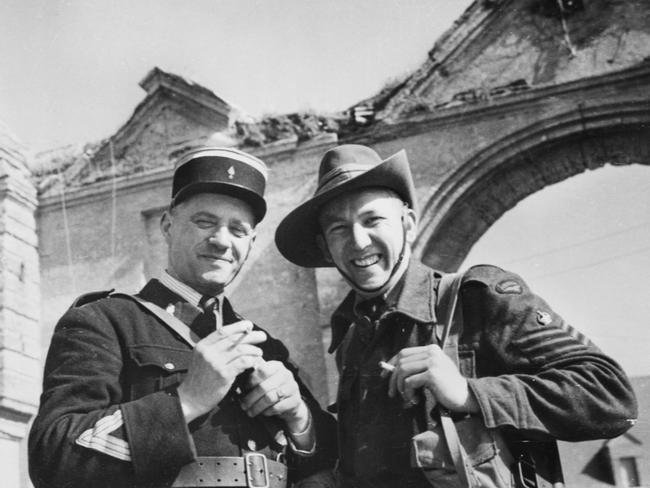
Anyone after some idea of its terrifying nature would be well advised to watch the recent TV epic Masters Of The Air, says Dr Grant.
“Of course it was about American bomber crews, but it did a really good job of reflecting what it was like to try and survive the bombing campaign,” he said, noting the similarities with the Australian experience as commemorated by the Australian War Memorial’s Bomber Command monument.
Similarly, he commends the famous biopic series Band Of Brothers and movie Saving Private Ryan as good starting points to imagine what Overlord was like for soldiers on the ground.

“Absolutely, I think those two shows (are a good representation),” he says. “Band of Brothers in particular, as it was based on the accounts of real people who were there. I think that’s why it has such enduring quality and was so popular with viewers because they really emphasise with these real people, these stories – it was real history.”
The ground fighting in Normandy was, like the air war, brutally costly. Nearly 37,000 Allied soldiers died between June and August (2,500 on D-Day itself), out of more than 425,000 Allies and Germans killed, wounded or captured. An estimated 15-20,000 French civilians also died.
Australian infantry – veterans of Africa, Greece, Crete and by 1944 mainly involved in equally vicious fighting against the Japanese – were fortunate to avoid the Overlord ground campaign, says Dr Grant, despite Freddie de Guingaud’s well-meant wishes.

Yet there was a handful of Australian Army soldiers on the ground – thirteen officers sent to watch and learn from the D-Day landings in preparation for amphibious assaults against Japanese-held territories closer to home.
Among them was Major Henry “Jo” Gullett, a decorated veteran of North Africa, who soon dropped his observer status. “He was sort of there to observe at the start, but as casualties mount up, he’s serving officer, so he takes command of a British unit,” says Dr Grant.
Gullett – who carried his Australian rifle everywhere, despite his officer status – took the job so seriously he was shot and wounded while leading an assault through the Norman countryside.
His experience echoed that of another D-Day Aussie at another legendary landing.
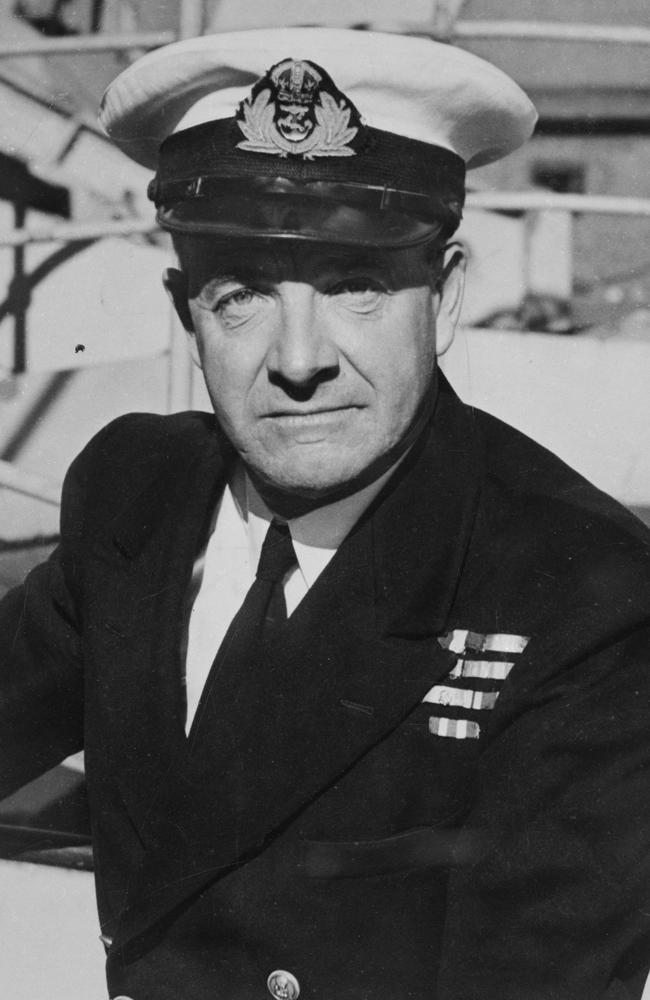
George Dixon, from Tasmania, was an original Anzac, who landed at Gallipoli on April 25, 1915. He was just 15, having enlisted underage. Days later he received multiple gunshot wounds and was invalided back to Australia.
In 1940, Dixon enlisted once again, this time in the Royal Australian Navy. Decorated in the 1943 Sicily landings, by D-Day he was a lieutenant-commander, in charge of one of the tank landing ships supporting the Canadian landings on Juno Beach.
Dixon was one of around 500 Australian sailors in action on D-Day, serving on all sorts of vessels from battleships and motorised torpedo boats to transports and midget submarines. The extraordinarily complex seaborne operation, named Operation Neptune, was the key to success in Overlord.
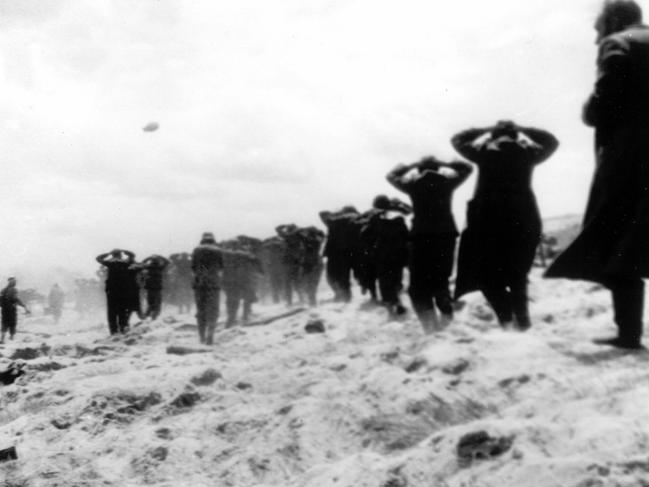
From sea to air to land, Australia’s role in the liberation of Europe serves as a reminder of why the country was at war at all. While we might understandably focus on the struggle against Japan in Asia and the Pacific, Dr Grant reminds us that “Australians went to war in 1939 over affairs in Europe. It was, after all, in response to the Nazi invasion of Poland that Australia declared war on Germany on 3 September 1939.”
Writing in the AWM’s Wartime Magazine, he also notes that Australia did not enter the Second World War simply because of its ties with Britain and empire – but because, in the words of then Prime Minister Robert Menzies, if German aggression went unchecked, “there could be no just peace for the world”.
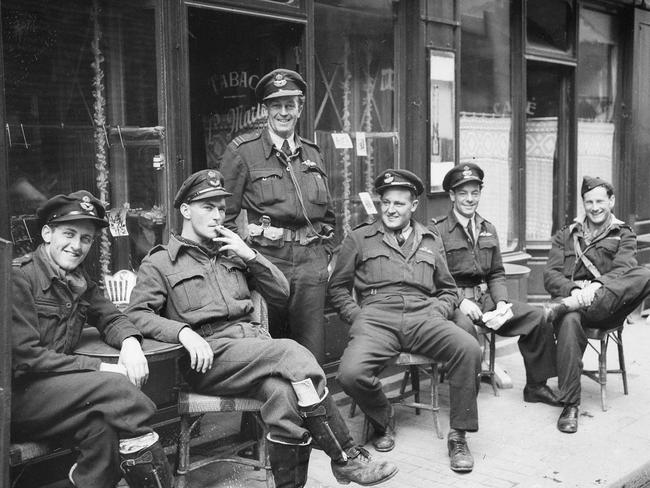
MEET OVERLORD’S EXTRAORDINARY AUSTRALIANS
Six extraordinary people from among the many whose stories span the Australian experience at D-Day and the battle for Normandy, as suggested by Dr Lachlan Grant, senior historian at the Australian War Memorial.
ROYAL AUSTRALIAN NAVY

Lieutenant Commander Ken Hudspeth (Royal Australian Naval Volunteer Reserve)
“An incredible story,” says the Australian War Memorial’s Dr Lachlan Grant. A Tasmanian schoolteacher before the war, Ken Hudspeth was a much-decorated commander of midget submarines – and was one of the 500 members of the Royal Australian Navy serving on attachment to the Royal Navy at D-Day. Hudspeth had the notable mission of commanding submarine X20; mooring it off Juno Beach as a navigational beacon to guide landing craft to the beach. For this daring mission, he was awarded a second Bar to his Distinguished Service Cross (DSC). His DSC had been awarded for the famed submarine raid on German battleship the Tirpitz in 1943, and the first Bar to his DSC had been awarded for commanding X20 on a survey mission to the Normandy beaches in the build-up to Overlord.
SERVING WITH BRITISH FORCES
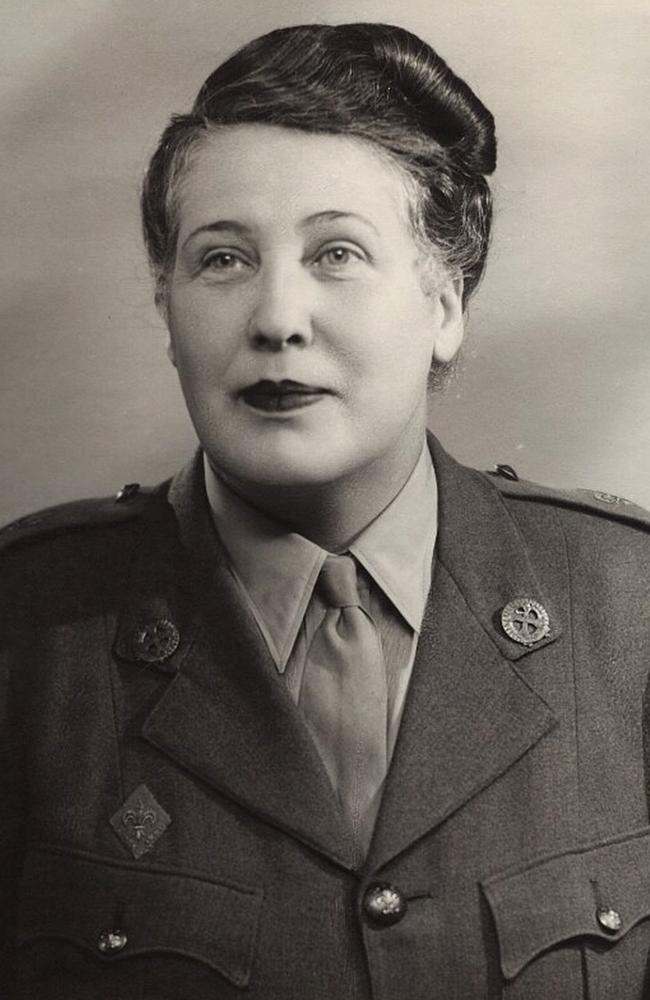
Senior Commander Olive Sherington
Olive Sherington from Sydney was “an incredible person,” according to Dr Grant. As a British nurse in WWI, she met an Australian officer and moved Down Under. Her husband died in 1939 so she took a holiday to Europe; and was in England when war broke out later that year. Enlisting in the Mechanised Transport Corps, she served in France in 1940 where she was Mentioned in Despatches and received a commendation for bravery from King George VI and Winston Churchill. One of the last British servicewomen to leave France after the evacuation of Dunkirk in 1940 – saving 14 wounded soldiers who were in her truck – she was one of the first to return, driving her vehicle ashore at Normandy as a senior commander just a few days after 6 June, 1944. Between those events she served as an ambulance driver during the Blitz and, later, was with the British forces that liberated Bergen-Belsen concentration camp.
SECOND AUSTRALIAN IMPERIAL FORCE

Major Henry “Jo” Gullett
One of 13 AIF officers attached to the British Army for the landings, veteran fighter Major Henry “Jo” Gullett went ashore at Gold Beach with the Green Howards, carrying his Aussie-issued Lee Enfield rifle – “which he’d had with him the entire war”, according to Dr Grant and a captured Italian Beretaa pistol – a souvenir of his war in the North African desert. The Melburnian had also served in Papua and New Guinea, where he was awarded a Military Cross, and was at D-Day to observe in preparation for amphibious operations against the Japanese. Being an observer did not stop him fighting – he was wounded in an assault in July while attached to the Scots Guards, eventually rejoining the unit in the Netherlands. He later authored a memoir about his wartime experiences.
ROYAL AUSTRALIAN AIR FORCE
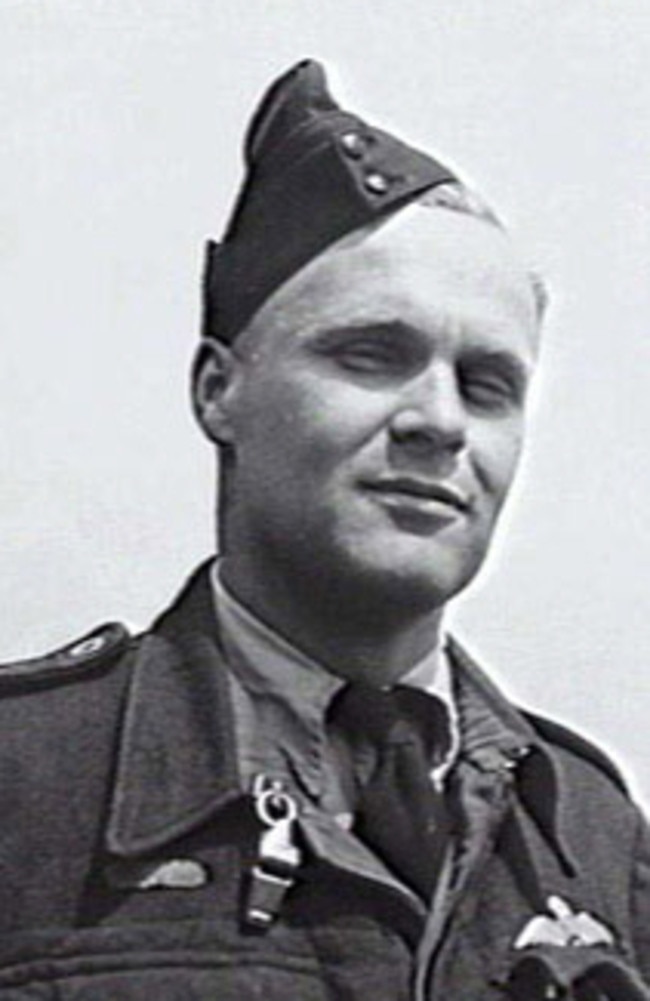
Flight Sergeant Leslie Gilbert
A tragic story, but “very typical of the Australians serving in the air force during the Second World War – all of them volunteers,” says Dr Grant of Perth-born Leslie Gilbert, from Casino, NSW. As an RAAF pilot serving on attachment to the RAF, for D-Day he piloted a Stirling aircraft carrying British paratroopers of the 6th Airborne Division to their landing zones in Normandy. Gilbert’s aircraft was shot down over the dropzone in France; killing him, his fellow five crew members, and nine of the 20 soldiers on board. He was one of 41 Aussies flying paratroopers and towing glider units on the night of June 5 – so “the Australians are there pretty much from the first moment of the D-Day battle”, says Dr Grant.
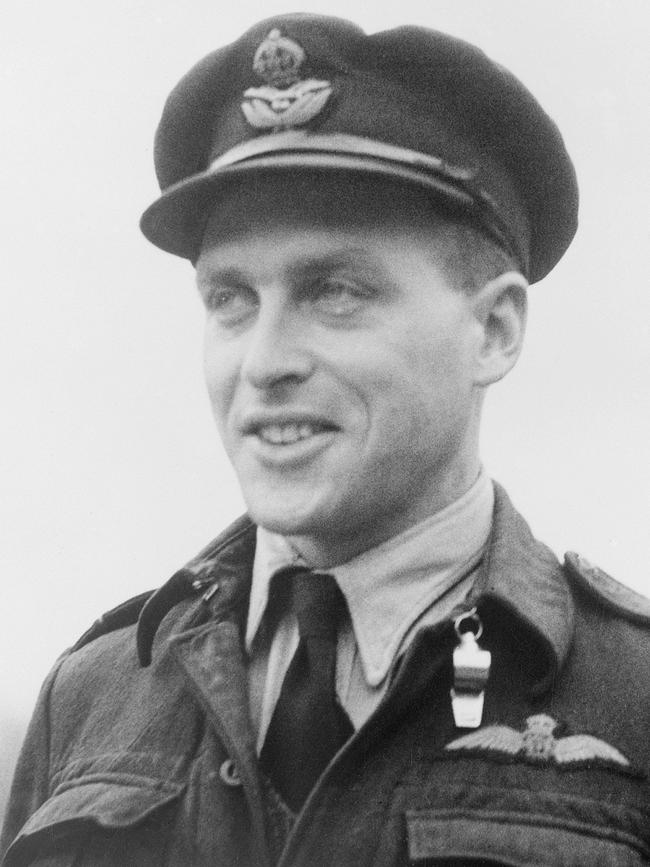
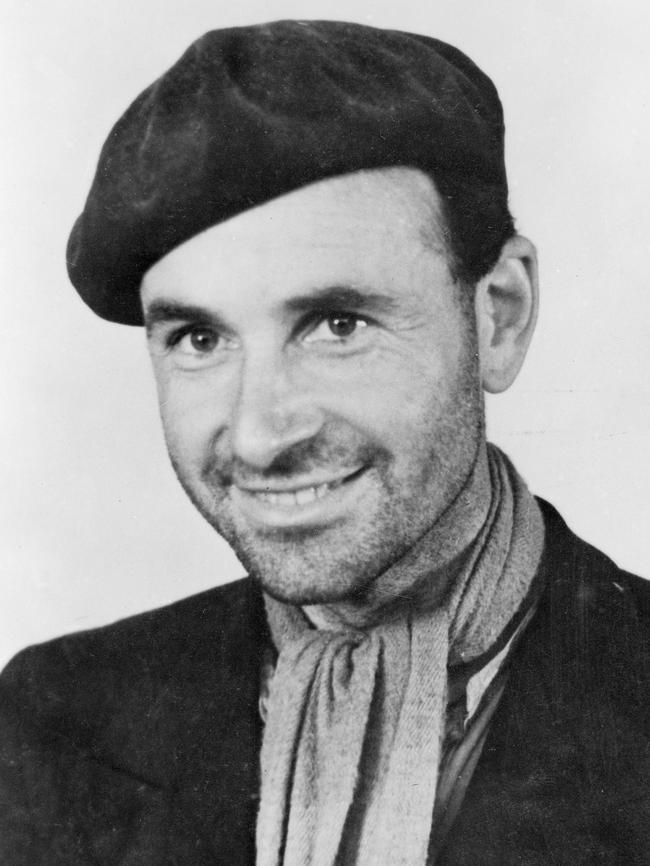
Squadron Leader Arthur Oxlade and Flight Lieutenant Donald McKenzie Shanks
Squadron Leader Arthur Oxlade from Box Hill, Victoria, was a De Haviland Mosquito pilot with No. 464 Squadron RAAF – “a skillfull pilot and a very popular squadron leader,” says Dr Grant. On the night of 5 June 1944 his fighter-bomber was hit by flak during a patrol to intercept enemy aircraft heading towards the Allied landing zones. The 24-year-old Oxlade was killed; his navigator, fellow Victorian Donald Shanks, managed to bail out but landed far behind enemy lines. He spent the next three months hidden from the Germans by French civilians, much of the time pretending to be a farm labourer, before Allied forces finally arrived in the area. He rejoined the force and survived the war, despite having to bale out once again – and landing safely once again – during an operation in January 1945.
‘MY BROTHER WAS TOLD TO SHOOT YOUR SON’: READ MORE ABOUT AUSSIE AIRMEN AND THE WAR FOR EUROPE IN THIS ACCOUNT OF THE GREAT ESCAPE.
Originally published as D-Day 80th anniversary: Crucial roles played by Aussies in Normandy landings



